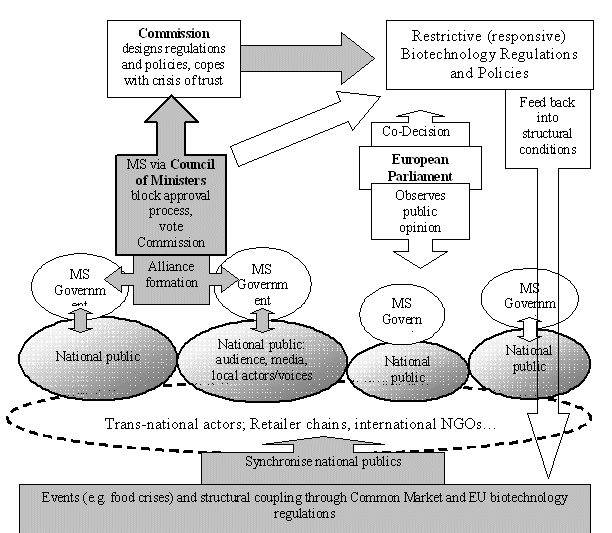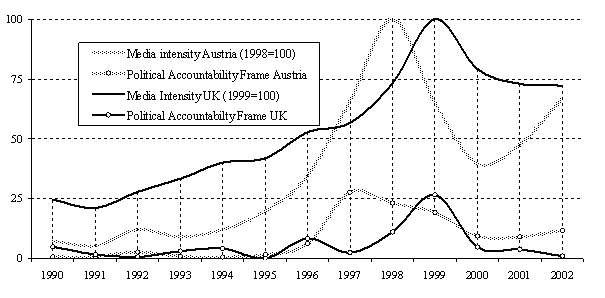By fomenting dissent against genetic engineering, opponents are furthering the cause of democracy, says Dr. Franz Seifert, who did a recent study for the Austrian Science Fund FWF project.
What does that mean? What Science 2.0 has said all along. Science decisions need to influence policy, so if you want to make the most informed decisions, get all of the facts first.
Obviously there's a controversy regarding genetic engineering. Unlike most science sites, here you can find arguments for it and against it, both backed by science data. Seifert did his study in the EU where some decisions are made on the continental level but most debates take place at the local and national level. It then requires those local decisions to filter up to the bureaucracy.

This kind of democratic change in Europe is important he says, and it's an essential by-product of the genetic engineering debate.
"Temporary situations occur such as in Austria, when one population resists the EU's introduction of genetic engineering into agriculture, while populations in other European countries either don't notice the protest or simply have other worries at the time. A protest coming from just one country’s population, however, will have little impact in the EU."
So international political organizations, like Greenpeace, or worldwide science sites, like this one, become increasingly important in bringing information to people so that they can have a voice, but once they have a voice they will still have to mandate action at a local level.
Biotechnology in its modern form has existed since the 1970s but concern was limited to primarily a small segment of US activist groups until the 1980s, when some interest cropped up, yet the debate was sporadic until 1997 when it suddenly seemed to be everywhere.
What accounts for that? The web? More people with instant news access? Seifert says it was the cloned sheep Dolly on 24 February 1997 and its moral implications that brought biotechnology attention and then, in some circles, infamy.
Finally, the left and the right, the secular and the religious, had a topic on which they could agree. The reaction was immediate. The French called biotech food "malbouffe", the British "Franken-food".
This synchronized upswell occurred because of the confluence of what Seifert called "actors" in the empirical sense, and he adapted them from Friedhelm Neidhardt’s idea of “the public as a communicative system.”
“There must exist: speakers, who say something; an audience, that listens; and mediators who relate speakers and the audience if they are not in immediate contact with one another – that is, journalists and the mass media.” (ibid: 340) From the wide plurality of possible publics which are conceivable under these analytical terms the focus here lies “on the politically most prevalent form of the public, namely the general public constituted by the mass media.” 4(ibid.)
Democracy or manipulation? Greenpeace is in the activism business, of course, and if there were nothing to protest they would be out of business. Starting with ending nuclear weapons, they switched to whaling when that faded, then to toxic rain and then genetically modified food. They started listing foods with "contamination" and kept "black lists" of retailers that carried GM foods.
So some of it was savvy marketing by activist groups and some of it was the simultaneous arrival of genetically modified soy and maize on many European shores. This further resulted in arguments about "hormone beef", antibiotics and others.
Clearly it took multi-national environmental activist corporations with experience in international campaigns to mobilize the various countries but how does Seifert sift through all of the marketing effects to glean where the actual democracy comes into play?
The international organization effort was important, he explains, but the work was primarily at the national level and each one took to its own evolution and schedule - so it wasn't simply a case of a few environmental corporations out-manipulating the companies in the GM business, it involved organic growth at the local level, including in some ways not very positive, such as in France where activist groups took to destroying even test fields of GM products. Others were less concerned; Spain has been employing mass biotechnology since 1998 with hardly a complaint from anyone there.

The US, which was first in protesting biotechnology, still remains nascent in protest whereas some European countries are very active, so there is some evidence that a European activist organization does not have the same influence in other regions. Greenpeace dumping papayas in Thailand only to have the hungry people grab them and run is further evidence that the concern over how food is created is less important than having enough of it.
Europe is torn. In the interests of international competitiveness they want to have access to modern technology, especially if they see no evidence of danger, but that is a government mandate versus the will of the people and primarily where Seifert sees the democratization effect.
In prior times, separate European countries would simply enact their own laws but a large organization mobilizing people on the local level is able to stifle bureaucratic mechanisms.
Overall, Seifert sees the biotechnology arena as the first example of a 'common cause' in European people.
Multi-national activism corporations like Greenpeace were able to mobilize people in a supra-national way by examining laws and progess in each country and presenting them to the broad public - given the complexity of European decision-making, that isn't an exercise most individuals would undertake.
Is European unity a fluke of circumstance or a sign that the continent is on its way to a common identity? It's difficult to say but, if that happens, historians will be able to look back at the conflict over genetic engineering as a watershed moment in its development.
The one thing it does affirm is that knowledge is power. Biotechnology is an incredibly complex field and that's the primary reason we list science data from both sides of the debate. Yet it's still non-experts, in government and in the populace, who make the decisions, and all the more reason why science sites without the burden of a particular ideology or a political agenda have become even more important.





Comments